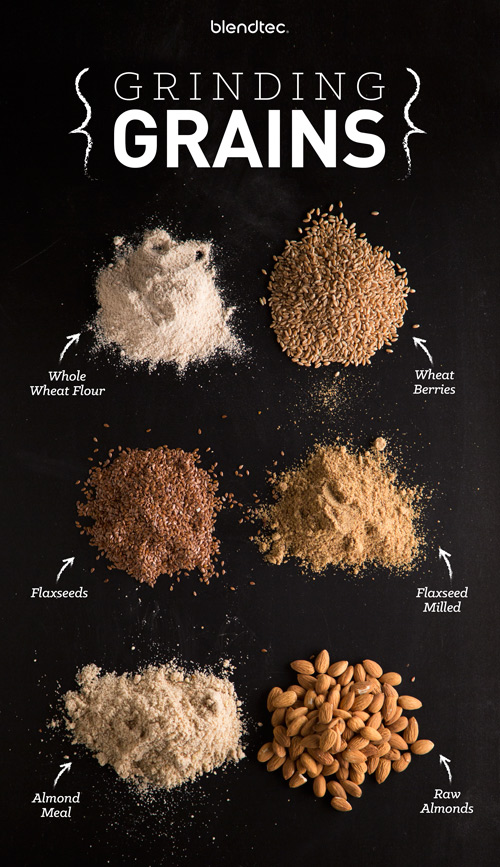Grinding Grains in a Blendtec Blender

Many Blendtec customers often ask, "Can I grind grains in my Blendtec?", "At what speed?", "How many cups?". So we put together some tips to help you know what kinds of grains you can put in your jar, how much, and at what speed, and for how long. Not only can you grind grains, but you can also crack grains, which is great for making your own hot cereals.
Cracking Grains: Cracking whole grains for hot cereals helps to shorten the cooking time and gives you all the nutritional benefits of the whole grain. Use the manual controls (Speed Up, Speed Down, and Pulse) to crack grains. The grind will not be an even cracking but is semi-uniform. Crack grains to desired degree of fineness. If a finer cereal is desired, blend longer. Remember the longer the machine runs, the finer the consistency of the cereal, up to the point that it turns to flour.
Cooking grains is similar to cooking rice. Add the dry grain in a pan with water or broth, bring to a boil and simmer until the liquid is absorbed. Grains can vary in cooking times depending on the grain variety and the age of the grain.
If the grain is not as tender, simply add more water and continue cooking. If the grain seems done before all the liquid is absorbed, simply turn off the heat and drain excess water.
Whole Grain Flours






How can I grind soaked rice to paste consistency? …is there any speed/time recommendation?
To grind grains, when it says “5, 6 medium or high” do you mean speed on
Pulse button? or any of the button like Ice Crush, Smoothie soups, Whole Juice etc can also work??
Please respond
Thanks
You can grind soaked rice to a paste consistency. We recommend using the Twister jar for the best and quickest blend on a low speed. If they don’t have a Twister jar, we recommend running it on a low speed (in your WildSide+ or FourSide jar) until you get the consistency you want. You may have to stop periodically and scrape the sides if you’re going for a paste.
I too am interested in a chart for grinding seeds. I just used the Blendtec to grind teff seeds into flour, hoping the speed for grinding flaxseed (5) would be comparable. It seemed to do a pretty decent job, turning out a flour that’s hard to distinguish from store-bought teff flour. The resulting flour is pretty warm though.
Do you mean whole corn kernels or corn on the cob? Corn kernels or popcorn can easily be blended in the blender on high speed for about 40-50 seconds.
Corn on the cob can be blended as well, though it takes more work to break it up. We recommend breaking it into smaller pieces and then pulsing the big pieces until desired texture is reached.
Leave a comment